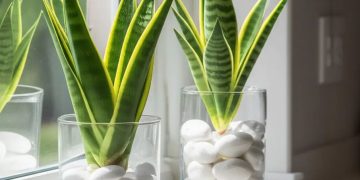Are Snake Plants Toxic to Cats?
The snake plant (Sansevieria trifasciata), also known as mother-in-law’s tongue, is a favorite among houseplant enthusiasts thanks to its striking, sword-shaped leaves and ability to thrive with minimal care. But if you’re a cat owner, you might be wondering: Are snake plants safe to have around my feline friend?
The short answer is no—snake plants are considered toxic to cats.
Why Are Snake Plants Toxic to Cats?

The primary reason snake plants are harmful to cats lies in a group of naturally occurring chemicals called saponins. These compounds act as a defense mechanism for the plant, helping to deter insects, fungi, and grazing animals. While generally harmless to humans in small amounts, saponins can cause digestive irritation in cats.
When a cat chews on the leaves of a snake plant, saponins irritate the tissues in their mouth and gastrointestinal tract, leading to symptoms of poisoning.
Symptoms of Snake Plant Poisoning in Cats
If your cat ingests any part of a snake plant, they may experience:
- Drooling or foaming at the mouth
- Nausea
- Vomiting
- Diarrhea
- Loss of appetite
- Lethargy or depression
These symptoms are usually mild to moderate and tend to resolve on their own within a day or two, but it’s important to monitor your cat closely.
What Should You Do If Your Cat Eats a Snake Plant?
If you suspect your cat has chewed or eaten a snake plant:
- Remove the plant immediately to prevent further exposure.
- Check for symptoms such as vomiting, excessive drooling, or behavioral changes.
- Contact your veterinarian for advice, especially if symptoms are severe or persistent.
- You can also call an animal poison control center for guidance (e.g., ASPCA Animal Poison Control in the U.S.).
Most cats recover fully after mild exposure, but medical attention ensures your pet stays safe.
How to Keep Cats Safe from Toxic Plants
To protect your pets:
- Keep snake plants out of reach, such as on high shelves or in hanging planters.
- Use deterrent sprays to discourage chewing on plants.
- Provide cat-safe plants or cat grass to satisfy your pet’s curiosity.
- Consider replacing toxic plants with non-toxic alternatives.
Safe Alternatives to Snake Plants
If you're looking for cat-friendly houseplants, here are a few safe options:
- Spider Plant (Chlorophytum comosum)
- Areca Palm
- Calathea
- Bamboo Palm
- Prayer Plant
These options are not only beautiful but also non-toxic to cats.
Final Thoughts
While the snake plant is an attractive and resilient houseplant, it poses a mild to moderate toxic risk to cats due to its saponin content. If you have a curious feline at home, it’s best to either keep the plant well out of reach or opt for safer alternatives. Your cat’s health and safety should always come first in a pet-friendly home.
















